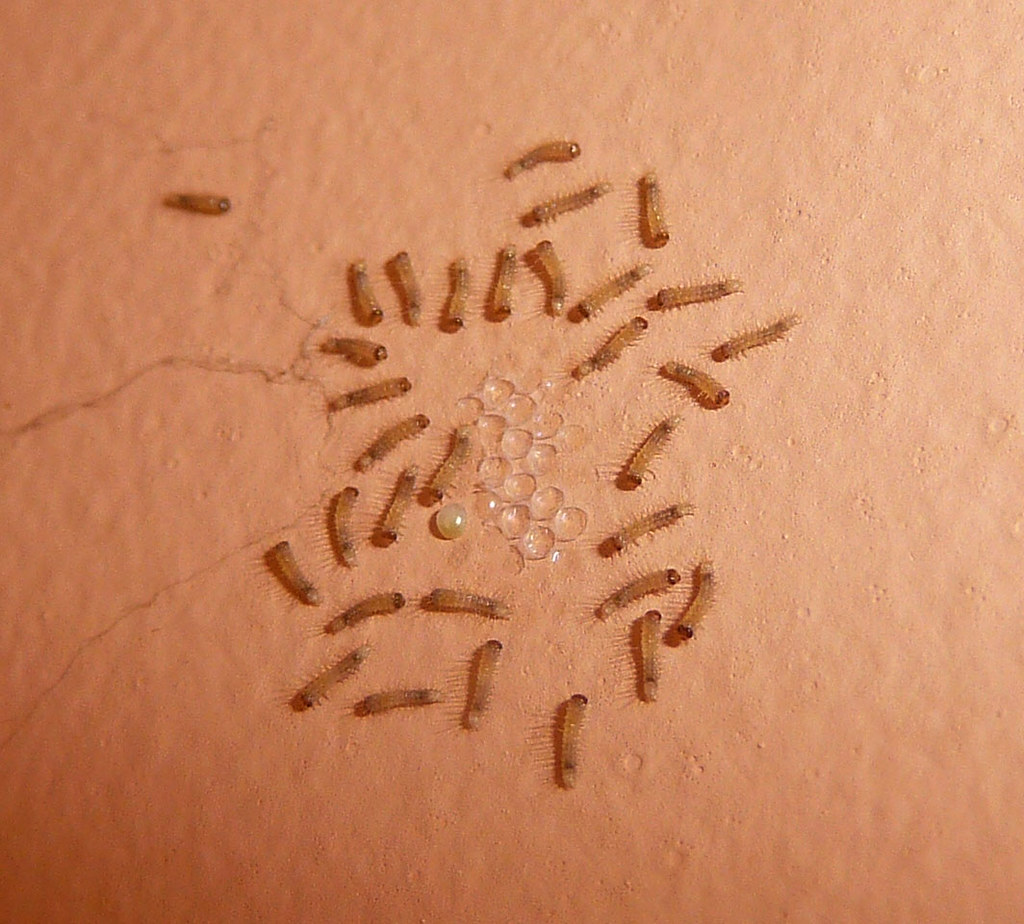Carpet beetle larvae are tiny yet destructive pests that can damage fabrics, carpets, and stored goods in your home. Understanding what these larvae look like, where they come from, and how to identify them is crucial for effective pest control. In this article, we’ll explore the appearance, habits, and life cycle of carpet beetle larvae to help you protect your home.

 Myths and Facts About Carpet Beetle Larvae
Myths and Facts About Carpet Beetle Larvae
Appearance of Carpet Beetle Larvae
Carpet beetle larvae are small, only about 1/8 to 1/4 long. They have a distinct appearance, with a brown or tan coloration and are covered in bristle-like hairs. The body of the larvae is elongated and somewhat oval, tapering slightly at the ends. These hairs can give the larvae a fuzzy appearance, and some species have tufts of hair at the rear end that can be shed when they feel threatened. The larvae’s segmented body is also marked with alternating light and dark stripes, making them relatively easy to identify once you know what to look for. However, their small size and ability to hide in fabrics and crevices make them difficult to spot with the naked eye.
Where Do Carpet Beetle Larvae Come From?
Carpet beetle larvae typically come from adult carpet beetles that have laid their eggs in dark, undisturbed areas of your home. These areas often include carpets, woolen fabrics, furniture, and stored items like clothing or blankets. The eggs become larvae and feed on natural fibers and materials, causing damage over time. The adult beetles themselves are often attracted to light and can enter homes through windows, doors, or cracks in walls. Once inside, they lay their eggs in areas with abundant food sources, such as wool, silk, leather, or feathers.Life Cycle of Carpet Beetle Larvae
Understanding how long carpet beetle larvae live is important for managing an infestation. The larvae stage is the most prolonged phase in the carpet beetle’s life cycle, lasting anywhere from several months to over a year, depending on environmental conditions like temperature and food availability. During this time, the larvae feed continuously, causing significant damage to household items. After the larval stage, the larvae enter the pupal stage, where they metamorphose into adult beetles. The complete life cycle from egg to adult can take anywhere from a few months to a year, depending on the species and environmental factors.What Do Carpet Beetle Larvae Eat?
Carpet beetle larvae are notorious for their voracious appetite for natural fibers. They feed on a variety of materials, including wool, silk, leather, feathers, and even hair. They are particularly problematic in homes with carpets, woolen clothing, upholstered furniture, and stored goods made from natural materials. The larvae can also infest pantry items like cereals, grains, and pet food, although this is less common. The reason these larvae are so damaging is that they have a preference for keratin, a protein found in natural fibers. This is why they are often found in areas with wool, fur, and feathers. Their feeding can result in irregular holes in fabrics and bald spots on carpets.Why Do I Have Carpet Beetle Larvae?
You might be wondering, “Why do I have carpet beetle larvae?” Several factors can contribute to an infestation. Carpet beetle larvae are attracted to homes where there is an abundance of natural fibers for them to feed on. Poor housekeeping, the presence of dead insects, or neglected fabrics can also attract these pests. They thrive in dark, undisturbed areas, so they are often found in closets, under furniture, or in storage areas. To locate beetle larvae, inspect areas where natural fibers are present, such as under carpets, along baseboards, in the folds of upholstered furniture, and inside closets. Look for small, shed skins, which larvae leave behind as they grow. These skins, along with damage to fabrics, are often the first signs of an infestation. Myths and Facts About Carpet Beetle Larvae
Myths and Facts About Carpet Beetle Larvae
| Myth | Fact |
| Carpet beetle larvae only eat carpets. | Carpet beetle larvae consume a variety of natural fibers, including wool, silk, leather, and feathers. |
| They can be easily spotted in your home. | Carpet beetle larvae are small and often hide in dark, undisturbed areas, making them hard to find. |
| Carpet beetles lay eggs in carpets only. | Carpet beetles can lay eggs in various places, including furniture, clothing, and stored goods. |
| Regular vacuuming eliminates carpet beetle larvae. | While vacuuming helps, larvae can still hide in crevices and fabrics, requiring more thorough pest control measures. |
| Carpet beetle larvae are the same as moth larvae. | Carpet beetle larvae and moth larvae are different pests, although both can damage fabrics. |




